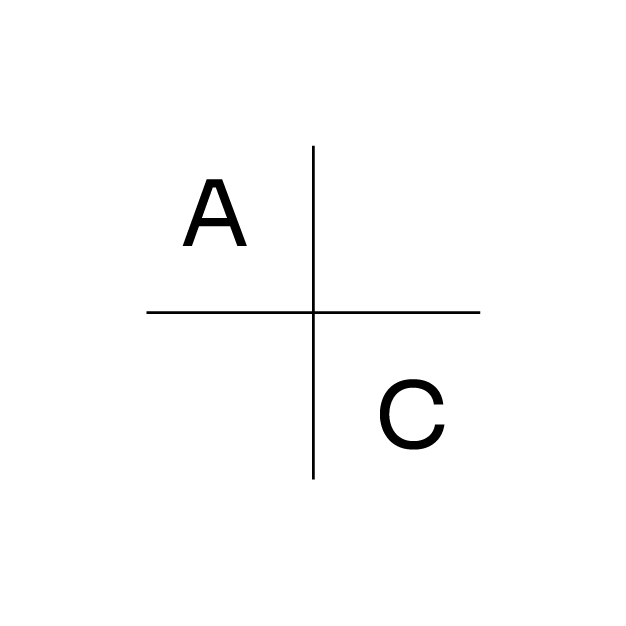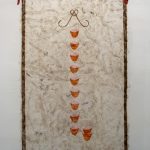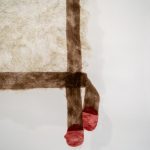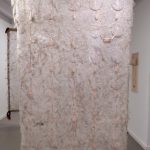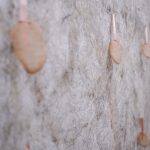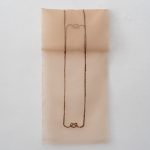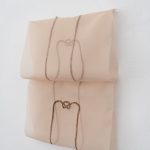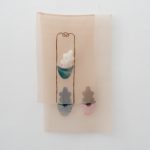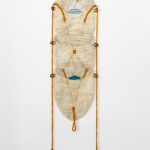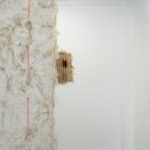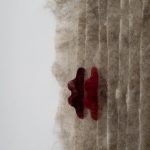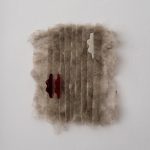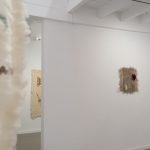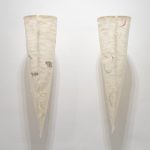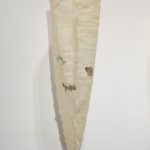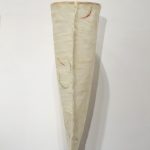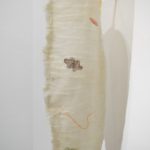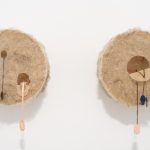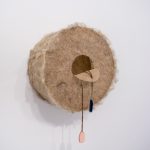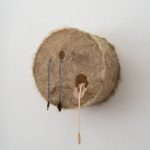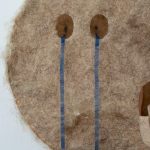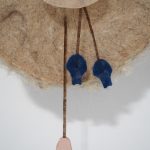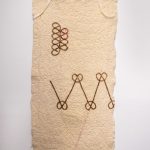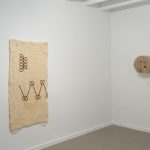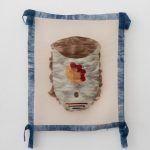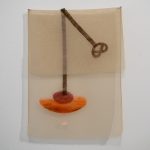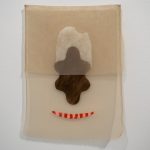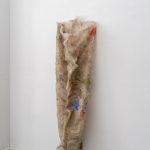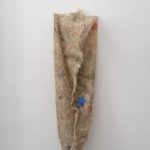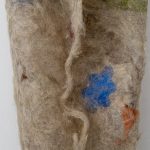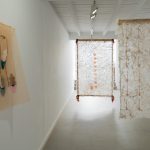Irene Infantes. Diez uñas traigo en forma de cuna
21.09.2023 > 25.11.2023
And if doubts lurks… weave, weave, weave
I read Irene Infantes’ work as if it was a text. A book of languages and an extensive piece of writing that handles several depths. None of her narratives are literal. Her language seems to wander like a sneaky look out of the corner of one’s eye. An equidistant dialogue with what is in front of us and what is inside us. There is a lot of collage there, layouts of fragmented images and quotes from metaphors and symbolism, which in her case have to do with gestures and fleeting moments, history and myths. A fact is always present, an object or a specific anecdote from which to draw. Elements that she thinks about, analyses, breaks down and reconstructs from a privileged voice, the artists’ own, opening up paths and focusing on events that otherwise could hardly be imagined.
Talking to the artist about this great text that seems to be her work, she says a phrase that could sum up her current project at Alarcón Criado Gallery: A womb full of fruits. I think of the idea of comfort and the meridian joy that effortlessly appears. I think of the satisfaction of filling gaps, feeling useful and the excitement of being the center of something or someone. I also think of the idea of gestation: an idea, a work, a life. Irene Infantes draws textile knots by tying several threads of several stories. A jigra, a summit, a girth or a pattern are present in her new works as a great hieroglyphic that refers both to Andalusian textiles and to the cosmology of the Nasa, an indigenous community from Colombia’s Andean region. The figures themselves are extensions of a text that denotes initiation rites from birth to maturity, movement and gesture. In a dance rich in references the artist speaks of popular wisdom, the one that she builds and inhabits and which exemplifies in the title, a hymn to this evolution: Diez uñas traigo en forma de cuna.
Let us unravel. The jigra is a small bag of sacred character, woven by women in fique fibers for their sons or husbands. In exchange, they offer them a hat. Both jigra and hat are woven in a spiral which symbolizes the weaving of life, evolution and thought. Referencing the jigra, Irene Infantes reminds us that everything has an origin, a history and a projection. Hers goes back to when she learned to sew at the age of six. She did it with her grandmother Ana, in a room full of fabrics. From that early moment the needle opened up a creative field full of possibilities that she would only discover later. In the Nasa culture, learning to weave is a fundamental part of the growth and development of a woman’s thinking. It is done from a young age and must always be finished, by doing so the woman demonstrates both strength and persistence while growing up. The jigras are made of the fique plant fiber and woven without needles. The spinning process of fique fibers is the same used for wool fibers, which in the artist’s case comes from old mattresses and waste materials from textile factories. By being a good weaver, the Nasa woman aims not to forget about herself, like someone who tirelessly tells where they are so as not to get lost. She is always working and if she leaves her weaving half done, she would be branded as lazy. Producing is their way of preserving the species and propagating tradition. For the Nasa, being a good weaver means to forget herself to merge with the community and become a great symbolic and collective entity. An idea. A symbol.
It is not by coincidence that Irene Infantes appeals to the productive tradition of the Nasa woman by relating to the small jigra bag. Between the lines, in a subtle but decisive way, she also speaks about productivity and work linked to artistic practices. The fact of not being able to stop or the penalty if that happens, is interwoven among the ideas of her current project. The shape of the bag repeatedly appears as mantra-like or a space-time coordinate system. This little bag contains but also offers, it preserves and at the same time serves as an offering. If we abstract the jigra shape it could also be a casserole or a wall pot. In its inverse form, if we see it upside down, it looks like a hat where to take shelter. A perfect circle that connects with her previous project based on a Islamic tradition textile, the turban of Hisham, whose iconography was dedicated the exhibition to.
In her works, it is common to see holes and ribbons in a sort of seemingly random but delicately thought-out composition. Some of them look like free dances or whimsical choreographies of colors. Others simulate a handbook for building an imaginary habitat. Under her compositions, she establishes a visual pattern that refers to didactic means, such as abacuses or other educational games, emphasizing the playful and ingenious side, creating a highly personal aesthetic in which the figures are as dependent on the meaning as words or symbols are within a text. Irene Infantes uses textiles to rediscover history in lowercase. The one that slips through the holes of the uppercase narratives. Once she spots it, she brings it to her own terrain to trace a kind of archive from which to speak about remembrance and biography. Irene Infantes has the vision of an architect. Hers is a textual and iconographic work conceived as minor architecture. A house-no-house that as an umbrella, can be either opened or closed, and simply signified as a vision. She seeks to find a non-woven fabric that, like felt, lacks of warp and weft. The artist juxtaposes matter and ideas as equals. The fine arts with the applied arts, for example, whose relationship she reads practically without gaps, as if they were both her native languages.
Bea Espejo
